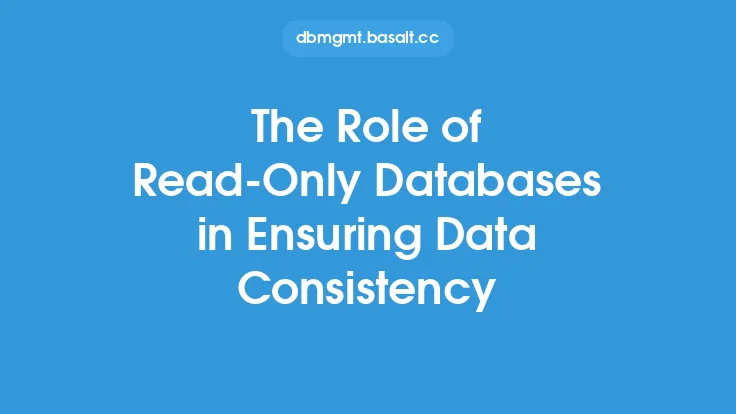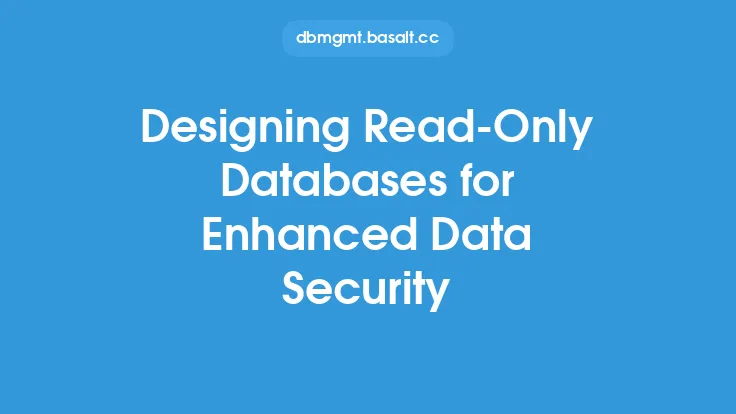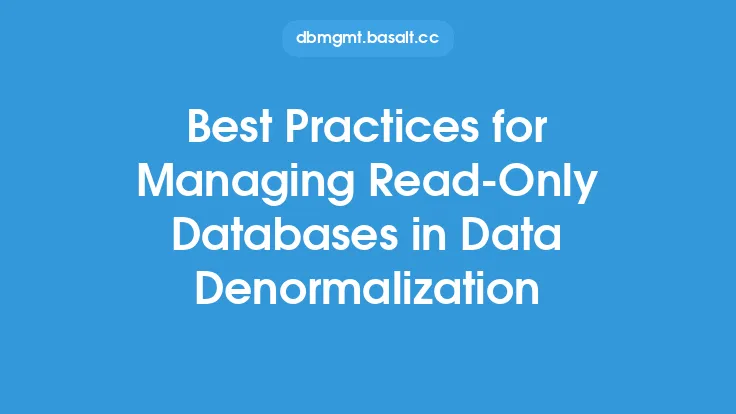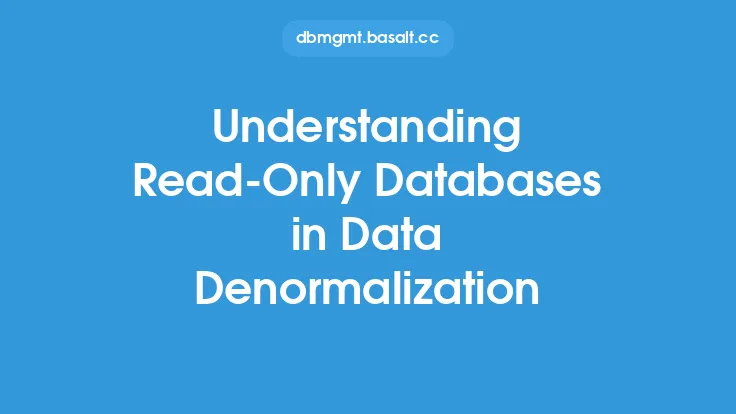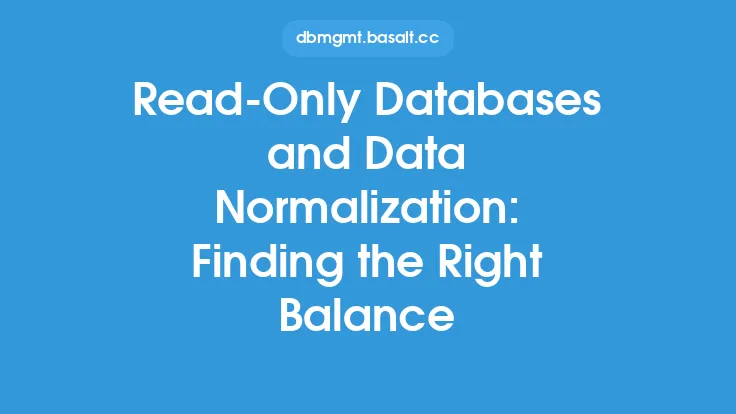Implementing read-only databases is a strategy that has gained significant attention in recent years, particularly in the context of data denormalization. By design, read-only databases are optimized for data retrieval and do not allow for data modification, which makes them an attractive solution for applications where data integrity is paramount. In this article, we will delve into the benefits of implementing read-only databases for data integrity, exploring the technical aspects and advantages of this approach.
Introduction to Read-Only Databases
Read-only databases are designed to provide fast and efficient data retrieval, while preventing any modifications to the underlying data. This is achieved by restricting write operations, ensuring that the data remains consistent and unchanged. Read-only databases are often used in conjunction with a primary database that handles write operations, allowing for a clear separation of concerns between data modification and data retrieval. This separation is crucial for maintaining data integrity, as it prevents concurrent modifications from interfering with data retrieval operations.
Benefits of Read-Only Databases for Data Integrity
The primary benefit of implementing read-only databases for data integrity is the assurance that data remains consistent and unchanged. By preventing write operations, read-only databases eliminate the risk of data corruption or inconsistencies that can arise from concurrent modifications. This is particularly important in applications where data accuracy is critical, such as financial transactions or medical records. Additionally, read-only databases provide a tamper-evident environment, making it easier to detect and respond to any unauthorized attempts to modify the data.
Data Consistency and Accuracy
Read-only databases play a crucial role in maintaining data consistency and accuracy. By ensuring that data is handled in a consistent manner, read-only databases prevent data inconsistencies that can arise from differences in data formatting or encoding. This is particularly important in applications where data is shared across multiple systems or platforms, as it ensures that all stakeholders have access to the same accurate and consistent data. Furthermore, read-only databases provide a single source of truth, eliminating the risk of data discrepancies that can arise from multiple versions of the truth.
Improved Data Security
Read-only databases provide an additional layer of security, as they prevent unauthorized modifications to the data. By restricting write operations, read-only databases reduce the attack surface, making it more difficult for malicious actors to compromise the data. This is particularly important in applications where sensitive data is stored, such as personal identifiable information (PII) or financial data. Additionally, read-only databases can be designed to provide audit trails and access controls, making it easier to detect and respond to any security incidents.
Reduced Risk of Data Loss
Read-only databases reduce the risk of data loss, as they prevent accidental or intentional modifications to the data. This is particularly important in applications where data is critical to business operations, such as customer data or financial records. By ensuring that data is handled in a read-only manner, read-only databases prevent data loss that can arise from human error or system failures. Furthermore, read-only databases can be designed to provide data redundancy and backup capabilities, ensuring that data is always available and accessible.
Technical Considerations
Implementing read-only databases requires careful consideration of the technical aspects. One of the primary considerations is the database design, which must be optimized for data retrieval and prevent write operations. This can be achieved through the use of database views, stored procedures, or other database-level constructs. Additionally, read-only databases require careful consideration of the data replication and synchronization mechanisms, ensuring that data is consistent and up-to-date across all systems. Furthermore, read-only databases must be designed to provide adequate performance and scalability, ensuring that data retrieval operations are fast and efficient.
Best Practices for Implementing Read-Only Databases
To ensure the successful implementation of read-only databases, several best practices must be followed. First, a clear understanding of the application requirements and data integrity needs is essential. This includes identifying the types of data that require read-only access and the performance and scalability requirements. Second, a thorough evaluation of the database design and architecture is necessary, ensuring that it is optimized for data retrieval and prevents write operations. Third, adequate testing and validation of the read-only database implementation is crucial, ensuring that it meets the required standards for data integrity and security. Finally, ongoing monitoring and maintenance of the read-only database is essential, ensuring that it continues to meet the evolving needs of the application and data integrity requirements.
Conclusion
In conclusion, implementing read-only databases is a highly effective strategy for maintaining data integrity. By preventing write operations and ensuring that data is handled in a consistent manner, read-only databases provide a tamper-evident environment that is essential for applications where data accuracy is critical. The benefits of read-only databases for data integrity are numerous, including improved data consistency and accuracy, enhanced data security, and reduced risk of data loss. By following best practices and carefully considering the technical aspects, organizations can successfully implement read-only databases and ensure the integrity of their data. As data continues to play an increasingly important role in business operations, the importance of read-only databases for data integrity will only continue to grow.
